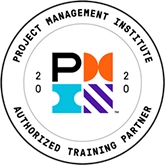How to Present Data That Tells The Story

Leveraging data to create an information-rich, easy to understand visual will greatly improve your influencing power.
I remember it like it was yesterday. Our team had made a breakthrough discovery about a process problem that had plagued our organization for years. We needed to show the leadership team the findings and convince them to invest in a new system. While the upfront investment was significant, the broader cost savings would justify it. I was nervous, but confident they would jump out of their seats with appreciation for what we had uncovered. As I scanned the familiar faces looking back at my slides with deer in the headlights type of looks, I feared I had lost them. My fear was validated when the general manager raised his hand and asked me what the heck he was looking at while we showed them a boxplot graph of data. He said it looked like someone’s DNA chart. I learned on that day there is a difference between Exploratory Analysis and Explanatory Analysis and I invite you to learn from my mistake.
- Exploratory Analysis is used to understand the data and discover patterns and new insights that often lead to deeper analysis and questions.
- Explanatory Analysis offers an explanation of that analysis in a way that tells a story.
There are four key questions to consider in Explanatory Analysis.
- Who is the audience? Focus your presentation towards a specific audience. If you are presenting to a general audience, focus on the audience that will be using the insight to make a decision or approve a solution.
- What do want to tell your audience? In data analysis, there are times when you discover root causes through elimination of theories that don’t prove to be true. Be careful not to spend too much time talking about what you disproved and get to the things you proved.
- What do you want your audience to do with the information you are providing? Make sure the audience is clear as to why you are telling them this information. It is rarely a good idea to just present problems without recommending solutions.
- Is the data you are sharing key to telling the story? Select charts and graphs that advance the story in a clear way.
Telling the story in a clear way requires a presentation of the data that the audience can read and understand. Below is a poor example of data that is shown to demonstrate a change from year to year. What information can you get from this chart? What is missing? Your audience will scratch their heads looking at these two pie charts.


Pie charts are one of the hardest charts to read for many reasons. Unless your decision maker has a love of pie charts, don’t use them. A bar chart is so much easier to read (see below).

Which chart best provide the audience with information you want to share?
Presentations that share conclusions made with data should do three things:
- Tell the story
- Inform
- Inspire
Using the right type of chart with the right message takes practice. Make sure the chart title explains the main message and remember that while we see with our eyes, we process the information with our brains. Humans scan charts from left to right and top to bottom. It is important to display the data that allows them to process the information and come to the same conclusion as the presenter.
This is a critical skill set that every business professional can benefit from. Whether you are presenting senior management with your breakthrough discovery like I was, presenting last month’s website metrics to the sales and marketing team, or even presenting your recommendation for a new initiative to your boss, leveraging data to create an information-rich, easy to understand visual will greatly improve your influencing power. CEG’s Insights from Data Certification Program is a five-day workshop that will teach you or your team how to collect, analyze and visualize data to make compelling cases that drive decisions, solve problems and create results.
About the Author
Anne Foley, PMP, MBB, CSSBB has been a quality leader for 20 years. She has relied on data analytics to solve problems and make decisions in various leadership roles. Anne is a senior trainer and consultant for Corporate Education Group. She is also the author of The Passages to Peace (a novel), Vitabook: Healthy Supplements for the Mind of a Graduate, and a frequent contributor to Project Management, Lean Six Sigma and other various publications. Anne has a Bachelor’s of Science degree in Journalism and Mass Communications from Kansas State University.
For more information on this topic, as well as how Corporate Education Group can help power your organization’s performance, contact us via email or call 1.800.288.7246 (US only) or +1.978.649.8200. You can also use our Information Request Form!



- ©2025 Corporate Education Group, operated by CEG Operating Company, LLC. All Rights Reserved.
Privacy Policy | Terms and Conditions - PMI®, PMP®, CAPM®, PgMP®, PMBOK®; and the PMI®; Registered Education Provider logo are registered trademarks of the Project Management Institute, Inc. CBAP® and IIBA® are registered trademarks of International Institute of Business Analysis. All other trademarks mentioned on this site are property of their respective owners. All rights reserved. CEG is an approved Authorized Partner within the Blanchard Authorized Partner Program and is licensed to market, sell, and train SLII®.
